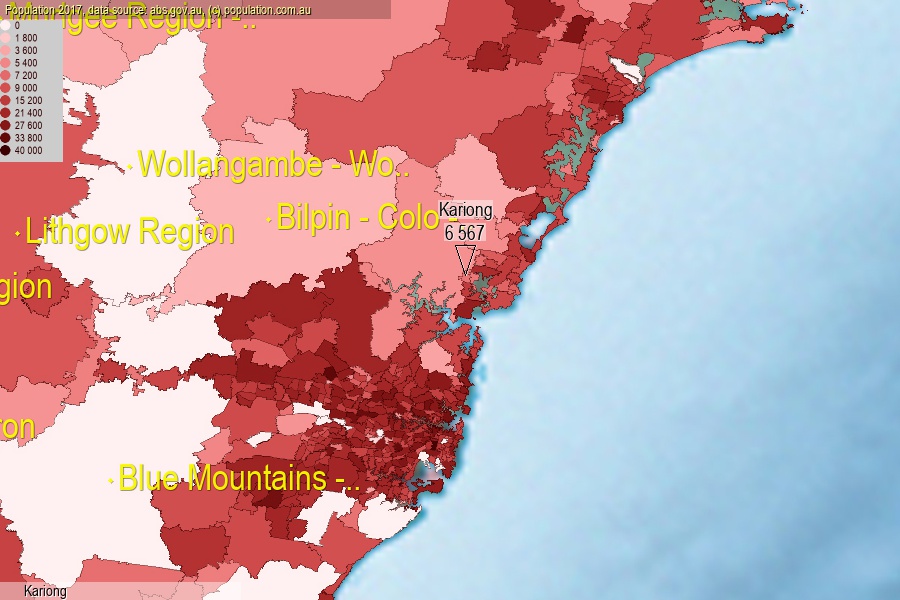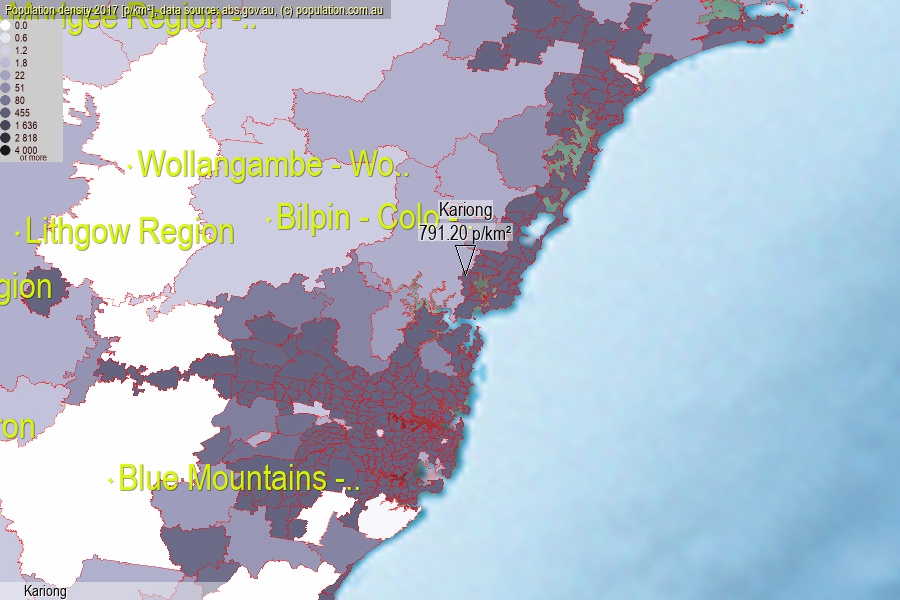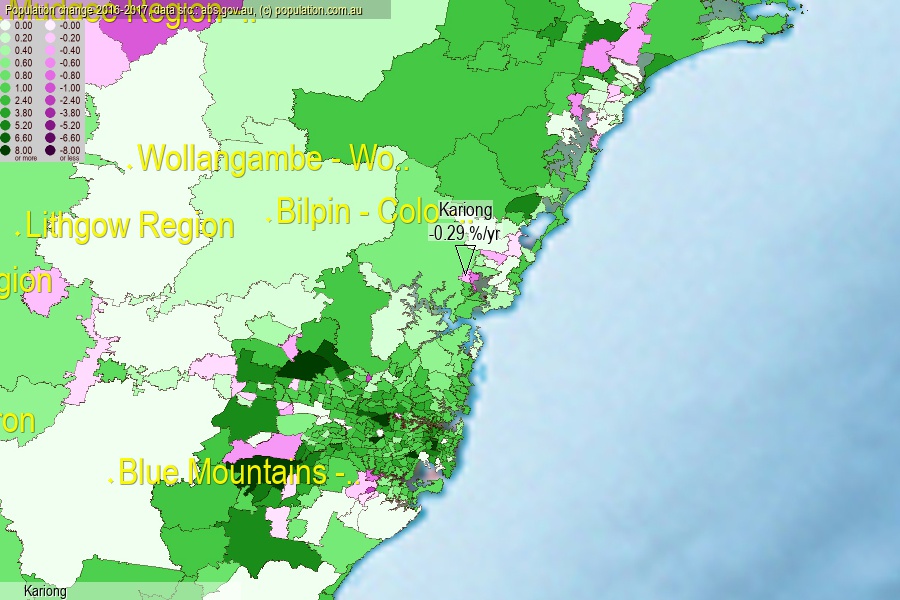 population.com.au
population.com.auLast official estimated population of Kariong (as Statistical Area Level 2) was 6 567 people (on 2017-06-30)[2]. This was 0.03% of total Australian population and 0.083% of NSW population. Area of Kariong is 8.30 km², in this year population density was 791.20 p/km² . If population growth rate would be same as in period 2016-2017 (-0.29%/yr), Kariong population in 2025 would be 6 417. [0]



Click to enlarge. Kariong is located in the center of the images.
Population [people], population density [p./km²] and population change [%/year] [2]
View borders » (new window) [4]
[1991-1992] +22.28 %/Yr.
[1992-1993] +18.10 %/Yr.
[1993-1994] +11.62 %/Yr.
[1994-1995] +6.94 %/Yr.
[1995-1996] +3.11 %/Yr.
[1996-1997] +1.09 %/Yr.
[1997-1998] +0.98 %/Yr.
[1998-1999] +1.19 %/Yr.
[1999-2000] +1.65 %/Yr.
[2000-2001] +1.30 %/Yr.
[2001-2002] -0.23 %/Yr.
[2002-2003] -0.72 %/Yr.
[2003-2004] -0.58 %/Yr.
[2004-2005] -0.05 %/Yr.
[2005-2006] -0.14 %/Yr.
[2006-2007] +1.38 %/Yr.
[2007-2008] +1.71 %/Yr.
[2008-2009] +1.23 %/Yr.
[2009-2010] -0.12 %/Yr.
[2010-2011] -0.77 %/Yr.
[2011-2012] -0.43 %/Yr.
[2012-2013] +0.05 %/Yr.
[2013-2014] -0.15 %/Yr.
[2014-2015] -0.39 %/Yr.
[2015-2016] -0.32 %/Yr.
[2016-2017] -0.29 %/Yr.
[0] Calculated with linear interpolation from officially estimated population
[1] Read more about SA2 and Australian Statistical Geography Standard (ASGS) on abs.gov.au
[2] Population data from Australian Bureau of Statistics (Population and density: 2017; change: 2016-2017)
[3] Digital Boundaries: Australian Statistical Geography Standard (ASGS) 2016.
[4] Border coordinates are simplifyed using Ramer-Douglas-Peucker algorithm.